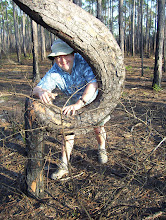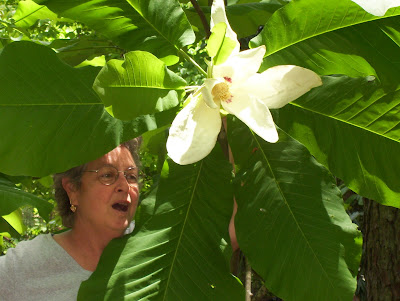 After a picnic lunch at tables with white tablecloths amid the splendor of Dunaway Gardens, we caravanned north on Route 70 then east on the South Fulton Parkway to Wilkerson Mill Gardens, owned by Elizabeth (shown above) and Gene Griffith. Wilkerson Mill is a nursery open to the public, specializing in hydrangeas. Elizebeth joined us for an hour, talking about the history of her developing sense of place on the thirty acres where she and her husband live and work in the Chattahoochee Hill Country. She began by leading us into a sheltered corner of her garden sales area, to talk with us about creating inviting living spaces with plants.
After a picnic lunch at tables with white tablecloths amid the splendor of Dunaway Gardens, we caravanned north on Route 70 then east on the South Fulton Parkway to Wilkerson Mill Gardens, owned by Elizabeth (shown above) and Gene Griffith. Wilkerson Mill is a nursery open to the public, specializing in hydrangeas. Elizebeth joined us for an hour, talking about the history of her developing sense of place on the thirty acres where she and her husband live and work in the Chattahoochee Hill Country. She began by leading us into a sheltered corner of her garden sales area, to talk with us about creating inviting living spaces with plants.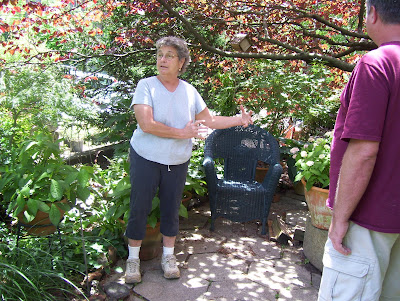 Then she led us on a ramble along some of the mown paths on her property. We wandered past a host of intriguing shrubs, some in bloom, others with fascinating leaves or patterns of growth.
Then she led us on a ramble along some of the mown paths on her property. We wandered past a host of intriguing shrubs, some in bloom, others with fascinating leaves or patterns of growth. Elizabeth told us how she and her husband, around twenty years ago, first acquired the land and decided to move there to establish an orchard. As the land was cleared for planting, she began to feel terrible about all the destruction that was involved. She was told by a mentor that she should find the most stunning tree on the property, go to that tree, and ask for forgiveness for the desecration by pouring all the energy of the loss into that tree. She explained that one tree stood out by far as the one she had to visit. It was a white oak hundreds of years old, probably even older than the grist mill on the property that dates from the 1860s. Just the day before, she shared with us, the tree had fallen abruptly in a strong wind. The loss was not entirely surprising -- after the stress of severe drought last year, the storms of spring have done a tremendous amount of damage to trees, especially elder ones, in and around the Hill Country. Still, she explained, she feels the oak's demise deeply. Connection to place carries with it a susceptibility to the anguish of loss.
Elizabeth told us how she and her husband, around twenty years ago, first acquired the land and decided to move there to establish an orchard. As the land was cleared for planting, she began to feel terrible about all the destruction that was involved. She was told by a mentor that she should find the most stunning tree on the property, go to that tree, and ask for forgiveness for the desecration by pouring all the energy of the loss into that tree. She explained that one tree stood out by far as the one she had to visit. It was a white oak hundreds of years old, probably even older than the grist mill on the property that dates from the 1860s. Just the day before, she shared with us, the tree had fallen abruptly in a strong wind. The loss was not entirely surprising -- after the stress of severe drought last year, the storms of spring have done a tremendous amount of damage to trees, especially elder ones, in and around the Hill Country. Still, she explained, she feels the oak's demise deeply. Connection to place carries with it a susceptibility to the anguish of loss.We came, at length, to where the great tree lay. The oak leaves were still green and fluttering in the light breeze. Amazingly enough, the tree fell in such a way as to block access to the mill, yet did not damage the historic structure in any way. It did relatively little damage in its fall, she explained, apart from flattening a pop-up camper belonging to a visitor who was doing some work on the property (who was not in it at the time, of course). We paused to admire the mill itself, with footings carefully shored up a few years back, by an Amish family from Michigan. Alongside the structure, the overshot wheel still stands in the millrace. This mill is the last of its kind, the only mill still standing relatively intact within the Chattahoochee Hill Country.
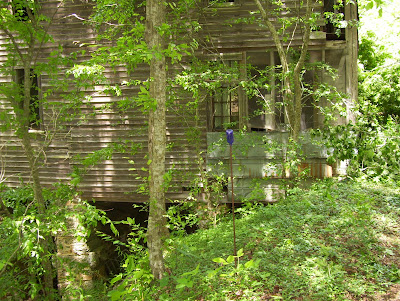 Our forward advance thwarted by the fallen oak, we retraced our path to some stone steps back up into the garden sales area. From there the group dispersed. Valerie and I were distracted by possible plants for our own three acres. We carried home in the back of our car a red buckeye, some Japanese painted ferns, and a Franklinia -- an understory tree that Valerie had been craving since our arrival in Georgia, named by William Bartram in honor of Benjamin Franklin, discovered in southern Georgia on his travels there, but now thought to be extinct in the wild. But that is another story, one that Mike Cunningham had shared with us nine days before....
Our forward advance thwarted by the fallen oak, we retraced our path to some stone steps back up into the garden sales area. From there the group dispersed. Valerie and I were distracted by possible plants for our own three acres. We carried home in the back of our car a red buckeye, some Japanese painted ferns, and a Franklinia -- an understory tree that Valerie had been craving since our arrival in Georgia, named by William Bartram in honor of Benjamin Franklin, discovered in southern Georgia on his travels there, but now thought to be extinct in the wild. But that is another story, one that Mike Cunningham had shared with us nine days before....
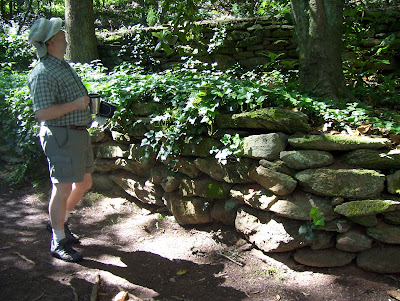
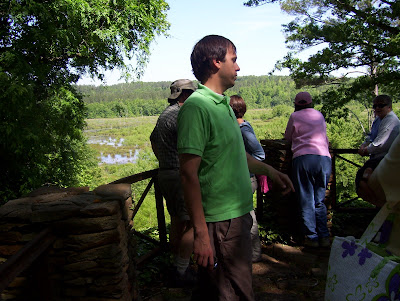
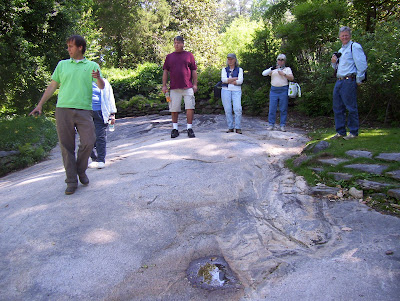
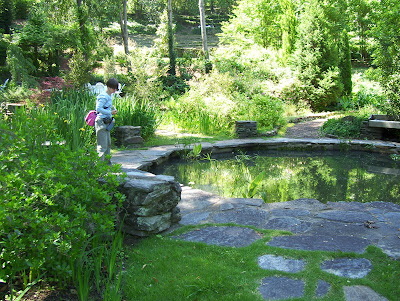
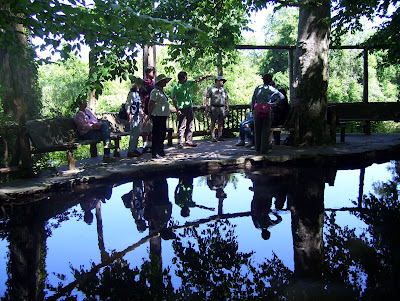
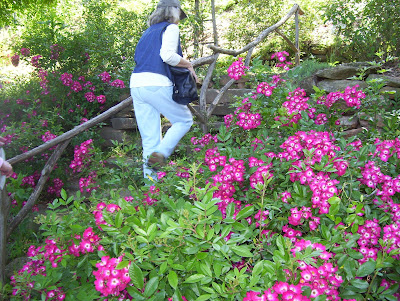

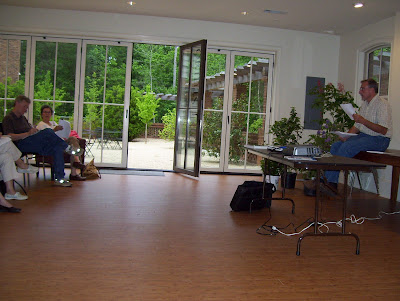 For the month of May, our Sense of Place workshop theme was gardens and gardening in the Chattahoochee Hill Country. The Thursday evening talk was given by Mike Cunningham, co-owner (along with his wife, Judy) of
For the month of May, our Sense of Place workshop theme was gardens and gardening in the Chattahoochee Hill Country. The Thursday evening talk was given by Mike Cunningham, co-owner (along with his wife, Judy) of 
